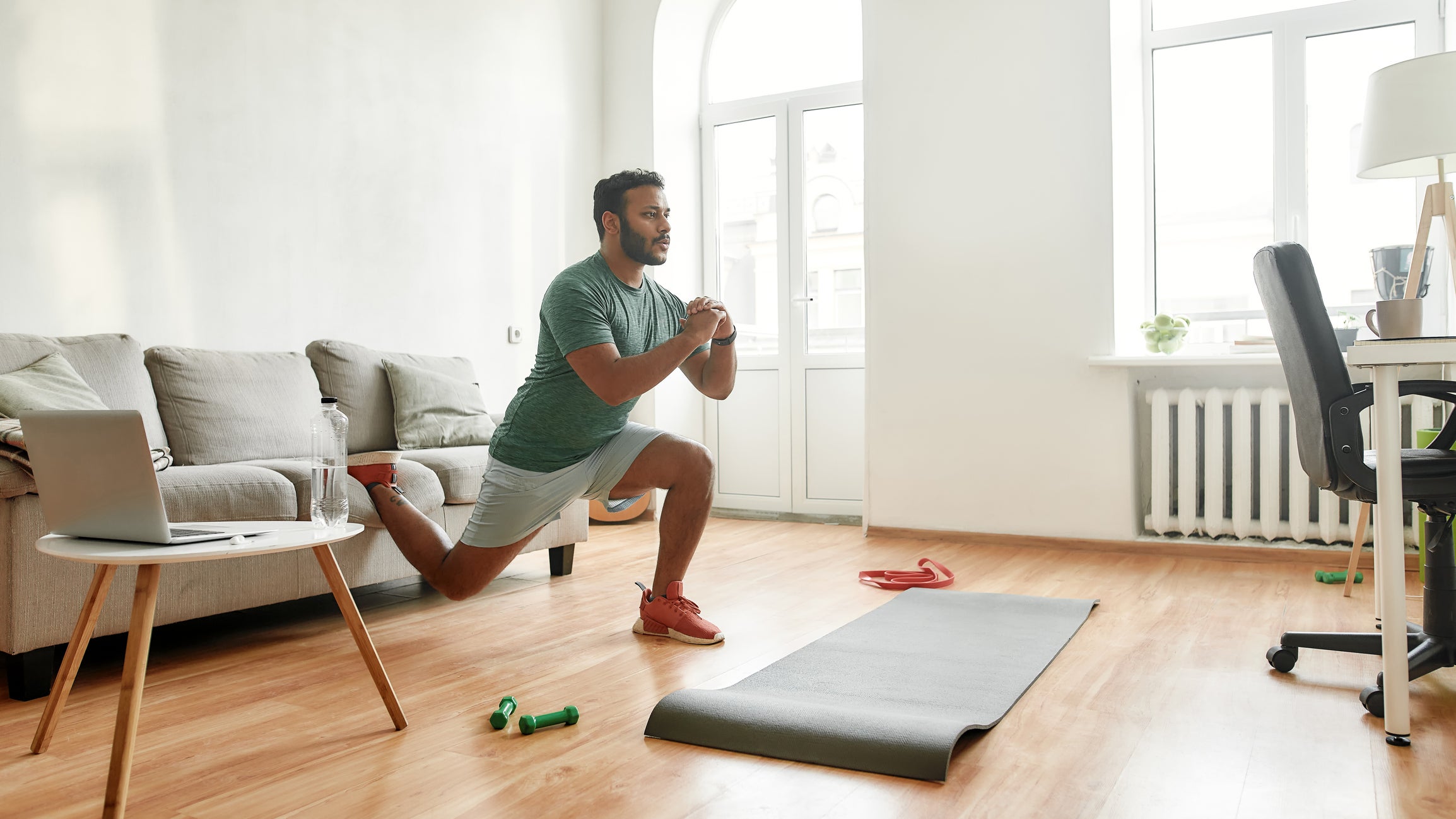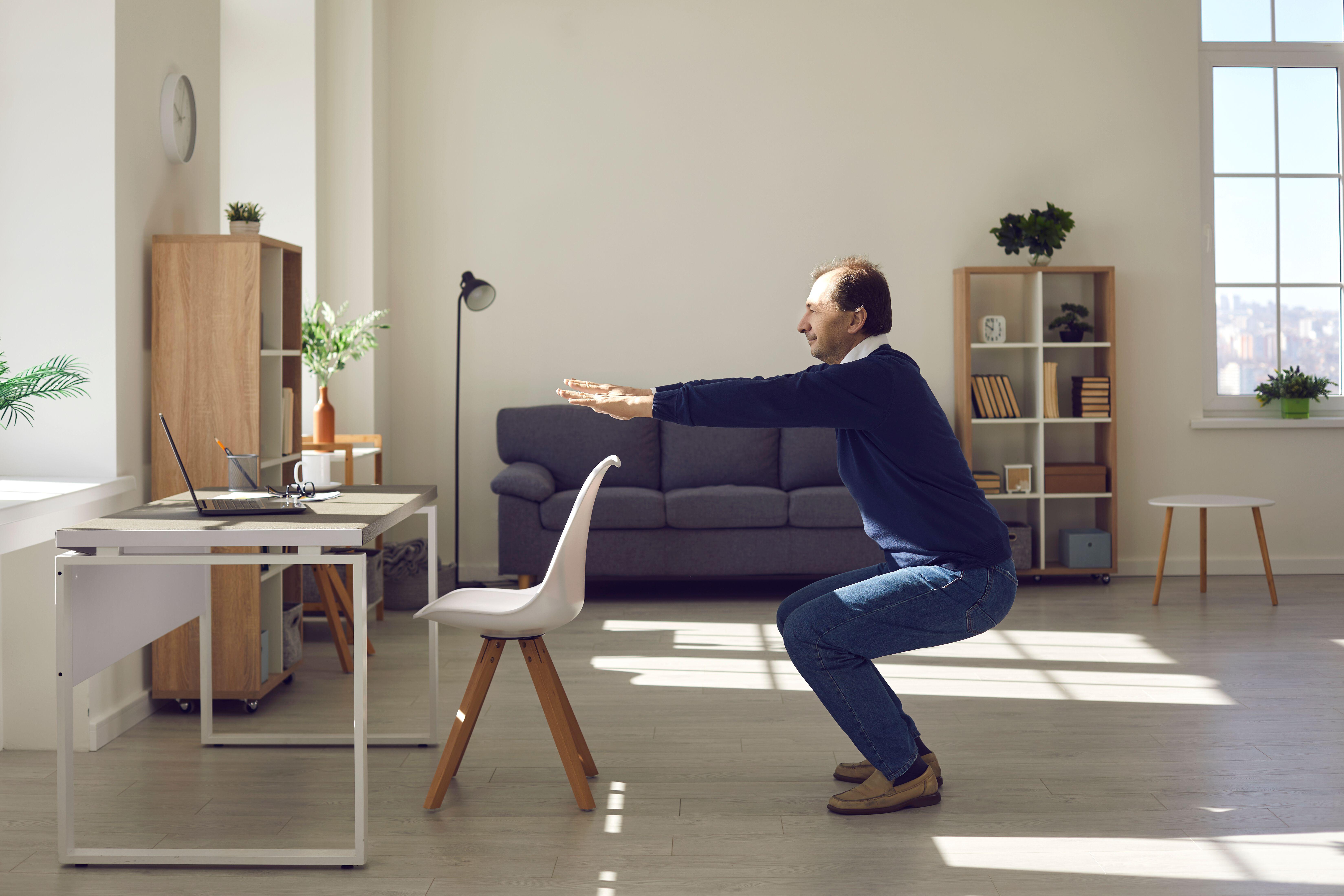ARTICLE AD BOX
There’s a common misconception that you need to spend an hour in the gym, several times per week, to make a dent on your health and fitness goals. But for most people, this simply isn’t the case.
Instead, any regular activity is likely to have an impact. A recent study published in the European Journal of Applied Physiology supports this, finding that a five-minute strength training routine, performed daily for four weeks, led to “significantly improved physical fitness and mental health in sedentary individuals”.
As far as I can see, the routine was nothing groundbreaking either, comprising progressive variations of the bodyweight squat, press-up, sit-up and calf raise. The progressive nature and consistency with which these exercises were performed is where the magic truly lies.
Though the sample size is small, what the study shows is that small amounts of exercise, and strength training in particular, can offer untold perks for beginners. I investigated why this might be the case, and how you can use this information to efficiently further your own health and fitness.
The workout
- Chair squat x10
- Wall press-up x10
- Chair recline x10 (similar to a sit-up, but performed in a chair with less range of motion)
- Heel drop x10 (a calf raise)
The “healthy but sedentary” participants of this study – four men and 18 women aged between 32 and 69 – performed 10 repetitions of each exercise to a strict tempo. This meant elongating the eccentric (or lowering) phase of each repetition for five seconds, then completing the concentric (or lifting) phase in roughly one second.
For the chair squat, for example, this would involve sitting down slowly over the course of five seconds, then standing up as normal.
“Participants were allowed to choose the time at which they completed the exercises, and the exercises could be performed together or spread throughout the day,” the research adds.
Once participants could complete 10 repetitions of an exercise with an RPE (rate of perceived exertion, or how hard an exercise feels) score of five out of 10 or less for two consecutive days, they were instructed to progress to a more challenging variation of the exercise. These variations were:
- Chair squat > one-leg chair squat > pistol squat
- Wall press-up > one-arm wall press-up > table press-up > knee press-up > press-up
- Chair recline back > chair recline back (legs straight) > sit-up
- Heel drop > heel drop overstretch > one-leg heel drop overstretch
Again, I want to stress that this isn’t a magic formula. It simply plays on tried and trusted strength training principles – progressive overload and a combination of exercises which recruit most major muscle groups – to deliver the stimulus needed for positive changes in people new to this type of exercise.
The main takeaway should be that just a few short minutes of adequately challenging resistance training per day, even without weights, can make a significant difference in sedentary populations.
Read more: How doing squats between emails could boost your health in midlife

What this means for your fitness
This article isn’t aimed at people who run marathons for fun or sign up to every Hyrox race going. Instead, it speaks to anyone who wants to improve their health and fitness, but struggles to find the time, energy and motivation to squeeze exercise into their busy lives.
For this group, it’s important to understand that small amounts of activity, performed consistently and progressively as in the study above, can have a significant impact.
“Most evidence shows that even doing very small amounts of exercise or physical activity is beneficial for health, but more is better for us,” says Dr Richard Blagrove, a senior lecturer in physiology at Loughborough University.
As a case study, he cites research published in the British Journal of Sports Medicine, which found that those burning a bonus 500 calories across the week, averaging out at just 70 calories per day, “show reductions in risk of mortality compared to being completely inactive”.
“The same is true for resistance training,” he adds, with research finding that just one challenging set of an exercise can increase strength, thus benefitting “functional performance” – i.e. how well our bodies can serve us in daily life.
Read more: Will the run club replace the pub? Why choose when both can help fight a deeper issue?

This favourable dose-response relationship is something Joe Wicks stresses in his approach too. Wicks has been visiting workplaces across the UK as part of a new initiative on movement and wellness, and says he’s witnessed a night and day difference between people who did and didn’t find time to exercise.
“I visited all of these companies, and you’d see people that are really struggling, people who are really busy, and people with kids who are working 12-hour shifts through the night,” says Wicks.
“What I realised is there are usually two groups; one of them is not exercising, and one of them is finding a little bit of time to do some form of exercise, whether it’s 10 minutes walking to work, something on their lunch break or a 20-minute YouTube workout when they get home.”
This latter group, he says, were healthier and more energised, with lower stress levels and better mental health. For this reason, he likes to highlight the importance of finding some time, however short, to move during the day.
“I want to make it really manageable and say, ‘Look, you might not have a full hour today, but do you have five, 10 or 15 minutes?’ It makes a difference,” he explains.
Walking and home workouts like his session below are Wicks’ premier prescriptions for beginners, with these accessible activities removing many of the usual barriers to entry for exercise such as time and money.
Another top option is exercise snacking – the act of microdosing fitness throughout the day. It’s a wellness trend that’s both easy to access and adhere to, no matter your fitness level.
A four-week study by the University of Essex and University of Suffolk found that just 16 total minutes of bodyweight exercises such as squats and lunges, spread across an eight-hour work day, “can mitigate against the negative effects of prolonged sedentary time [or sitting at a desk all day]”. Subjects saw improved leg strength and balance from the minimalist exercise plan.
Meanwhile, research in the Exercise and Sport Sciences Reviews journal honed in specifically on the term “exercise snacks”.
It defined the phrase as “isolated bouts of brief (<60sec) vigorous exercise performed multiple times throughout the day”, and found that doing this three times per day (often via cycling or stair climbing) could be “efficacious for improving cardiorespiratory fitness and exercise performance in inactive adults”.
Read more: This is how much exercise you should be doing per day, according to experts

The foundational theory behind this is called the SAID principle, which stands for specific adaptations to imposed demands. This simply means the body will adapt over time to get better at handling the things we consistently ask it to do.
If we sit in a chair all day, it might tighten our hip flexors to save us some energy. However, this is likely to feel unpleasant when we go to lengthen them again while walking or exercising.
Conversely, if we’re regularly raising our heart rate, cardiorespiratory fitness improvements are likely to follow, while consistent and challenging resistance exercise will lead to improvements in strength and muscle, provided we’re fuelling and recovering appropriately.
For this reason, any long-term change in behaviour which sees you challenging yourself physically and doing more than you were before will probably result in positive adaptations to your body.
This is partly why those who have been exercising for a long time require more dramatic changes to see progress, while newcomers can make incredible headway from just a few small tweaks like those discussed above.
Read more: Helen Mirren opens up on ‘complications’ of ageing as she shares advice for younger people

Key takeaways – and a free workout plan to try
The bottom line here is that, as far as exercise is concerned, a little goes a long way. This is especially true if you’re a beginner.
The title study shows how a few quick exercises can improve strength and mental health in sedentary adults, while the further research referenced above suggests these benefits also extend to cardiorespiratory fitness – the ability of the heart, lungs and blood vessels to supply oxygen to your working muscles during exercise.
If you want to put this information to good use by weaving some time-savvy exercise into your hectic schedule, my best advice would be to first pick one exercise you can do for each of strength coach Dan John’s basic human movements (push, pull, hinge, squat, carry). Then, perform each exercise for 8-12 repetitions, between one and three times throughout day. For example:
- Push: Wall press-up x8-12
- Pull: Bent-over row with a rucksack x8-12
- Hinge: Good morning x8-12
- Squat: Chair sit-to-stand x8-12
- Carry: Suitcase carry with a rucksack x8-12m in each hand
You might do this immediately after waking up, on your lunch break or whenever you boil a kettle while working from home – I realise this may draw a few funny looks in the office kitchenette.
When an exercise feels easy, find a harder variation or, in the case of the row and carry, incrementally increase the weight you’re lifting so it continues to provide a challenge. Et voila: an equipment-free beginner exercise plan for even the most time-poor of people.
Read more: The three short weekly workouts that can transform your fitness









 English (US) ·
English (US) ·